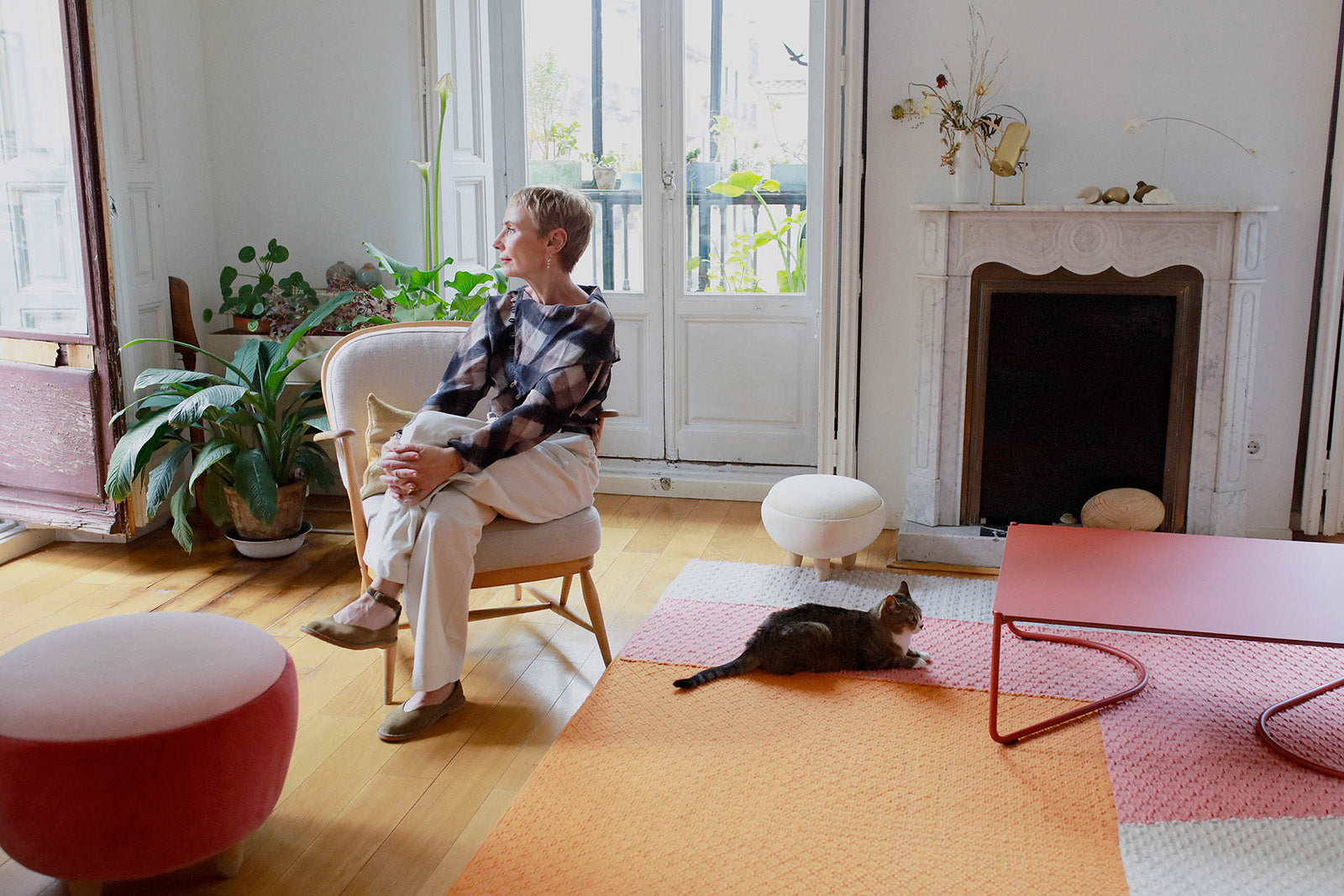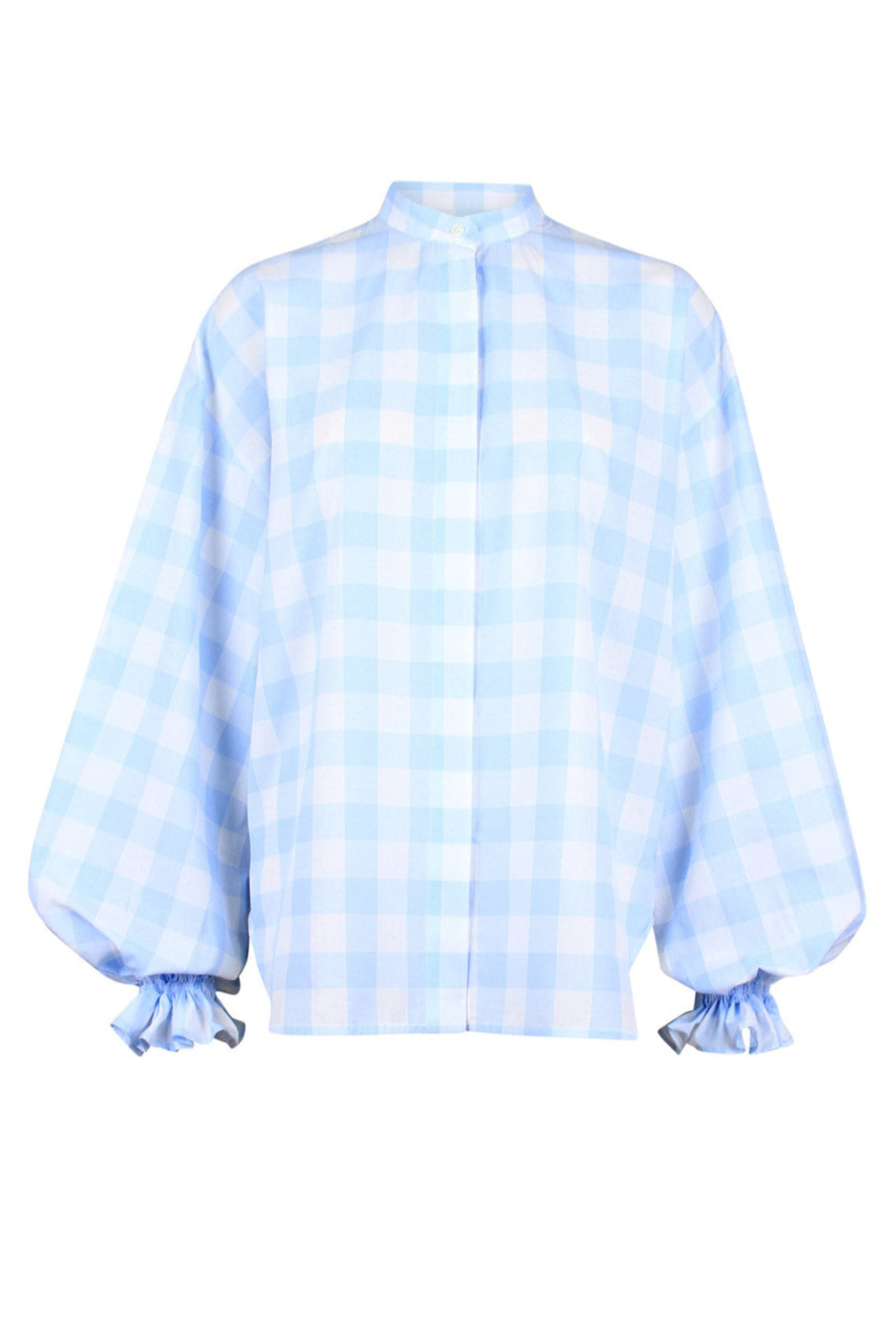HELENA ROHNER
Nestled in the cobblestone streets of the historic La Latina district, we met with Helena Rohner in her sun drenched apartment in Madrid.
Helena has spent thirty years forging a distinctive design path — one that marries unexpected materials with timeless craftsmanship. On a warm, welcoming Spanish afternoon we spoke to the self-proclaimed 'rebel' designer about her chance sabbatical in Italy, a Political Science degree at the LSE, the enduring influence of her Canary Islands upbringing, and the leadership philosophies that sustain her Madrid and Barcelona boutiques.
Read on as Helena Rohner reveals the inspirations, challenges, and milestones behind a career defined by curiosity, innovation, and bending the rules.

You began your studies in jewellery in Florence before earning a degree in Political Science in London. How did this unconventional path shape the way you approach running your studio today?
Jewellery in Florence came as a surprise. I signed up to a course by chance—looking to do something creative in a sabbatical year my parents offered me. It turned out I was good at it and enjoyed it greatly. Meanwhile, my plan for studies at the LSE was confirmed, so I moved to London and did my bachelor’s in international relations while taking artistic jewellery night courses. When I finished, I stayed in London for a year as an apprentice in various studios, one of them being Jacqueline Rabun’s, from whom I learned that this kind of jewellery has value, not one-off pieces, nor overly commercial ones. Jewellery pieces should add to your personality and be made for the wearer, connecting to art and fashion sensibilities.
All this to say: in the design world I have been an autodidact, a self-learner. This has had a very big influence, since I have learned closely from the old jewellers and artisans. It has meant I have designed within possibilities and kept everything strictly local. I need to be hand in hand with the crafters. On the other hand, having a degree in politics has been crucial in the management capacity to run a business and keep it coherent for the past 30 years, survival of a company depends a lot on this, especially for an international label, so politics has helped.
From porcelain and Japanese Miyuki glass to biodegradable PLA via 3D printing, you’ve pioneered novel materials. What’s your method for exploring and mastering a material’s properties?
I am always curious about materials, old and new, and have always wished to push further the combination of metal with other materials—I consider it gives value to both by juxtaposing them. My mother is a weaver and natural dyer, my father has made wooden marionettes. If I think back, I see I grew up giving value to materials and their craftsmanship. As a designer there is also a bit of rebelliousness—wanting to use non-conventional materials that become valuable too once set in this jewellery context. I guess it is a way of educating and attracting interest.
Many of your pieces resonate equally with men and women. How do you approach creating jewellery that transcends conventional gender norms?
My first pieces were especially universal and genderless. I searched for simplicity and essence. These were mainly women’s size since I was making them for myself. Paul Smith saw them on our first appointment and asked specifically to convert them into men’s jewellery, that was 28 years ago, and since then we present a new men’s line every six months that is also attractive to women. Paul Smith has bought from us every season for 26 years, women’s and men’s.

Your Canary Islands upbringing is often cited as a key influence. In what ways do the region’s light, textures and colours still inform your design process?
The Canary Islands are a very special place; a bit of Europe off the African coast. Historically, it has been a very important port on the way to America, following the alisios winds. Hence, it is very cosmopolitan and open to ideas and ways of living. I consider myself, and hence my designs, quite global and universal in perspective. In fact, I love thinking that my pieces can be sold in Japan, the US, Australia or Denmark and Spain, of course.
Then there is the aesthetic part: the colours and textures in nature in the Canary Islands are pure and strong, absolute in their depth and tones. There is a mood of essence in it all, kind of an African minimalism—blue and deep seas, volcanic earth, bright luscious green…
You’ve partnered with brands from Georg Jensen to Bobbi Brown. How do you adapt your design language when collaborating outside the traditional jewellery sphere?
I listen. I love all the makes I have worked with, and I hope to understand their essence whilst adding some of mine. It is a way of designing that comes from deep respect and humility. It is thrilling and I love doing it; it puts me in another space and challenges me to design something quite different from what I would do by myself. Company is always good.

Your collections blend sculptural form with everyday wearability. How has your own personal style evolved alongside your work, and in what ways do they inform one another?
I would say my design language, and with it my style, has become cleaner and more sophisticated, more silent and yet more personal, I think. It’s difficult to speak about one’s own style when you're consistently evolving.
Is there one piece from your wardrobe that you consider a personal staple, something you reach for again and again? What about it makes it indispensable in your personal style?
Mmm, there are lots of pieces, very much depending on my mood. My Britt Sisseck Dahlia shirts, I have it in two versions and love them. A beautiful red sweater I use when I wish to be bright, old jeans I share with my daughter and wear a lot, a few different jackets I wear including a Britt Sisseck padded one with a beautiful lining… a Loewe scarf inherited from an aunt… many!

This year marks three decades of your design journey. What themes or milestones are you most excited to highlight, and how is the retrospective shaping your perspective on the studio’s future?
The retrospective makes me stop and think about what I have been able to do. It is a big change considering that as a designer we are always thinking of the future. Only now is it sinking in all that has been done.
I will highlight all the jewellery pieces that show the use of varied materials: the wood collection; the porcelain one I did when Lucas was born; the 3D print as innovative, and then the objects designed, like my lamp and teapot that have sold so well in Denmark; the Helena tea set and other designs for Georg Jensen; together with the handles and knobs for Ferm Living that sell so well, handmade in cast by me—and can even be seen in the Britt Sisseck Madrid store.
What guidance would you share with young designers today who dream of building an internationally recognised label?
I would say: think big. The world is out there with lots of people who are sensitive to your thoughts and visions. We are finally all interconnected and that is beautiful.

With two boutiques (Madrid and Barcelona) and a growing team, what leadership strategies have you found most effective in nurturing both creativity and craftsmanship?
Leadership strategies have been based on intuition and a hardworking conscience to produce a coherent, well-run space where employees and clients feel safe and well. I have always had in mind this project as a long runner, always trying to protect its stability and listening closely to changes around us and the world. On a practical level, this translates to selling wholesale from Paris on an international level, designing other objects to open further markets, making special collaborations with museums and connecting the designs to the art experience, and having our own shops to show our way of living the jewellery and objects.
photos by lourdes cabrera for britt sisseck
If you'd like to see more of Helle's work, you can find her at www.helenarohner.com







